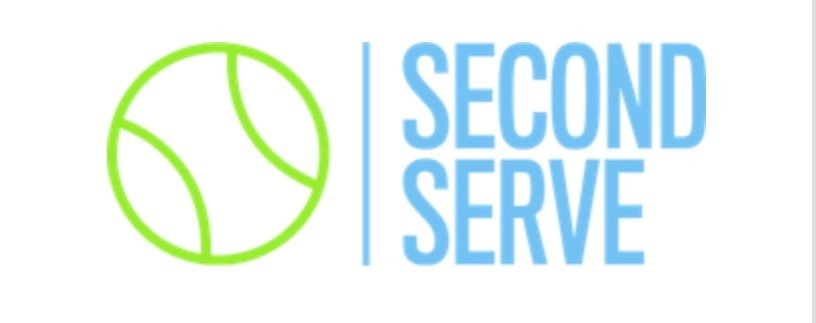Advice on Picking a College

The following was written by Coach Andy Brandi and originally posted on the USTA’s Player Development website here and here. Coach Brandi served as a partner of the Harold Solomon Tennis Institute since 2007 before joining the USTA staff in August 2010. From 2001-06, Brandi was Director of Tennis for IMG at the Evert Tennis Academy in Boca Raton, and from 1984-2001, he was the head coach of the University of Florida women’s team. During his career, Brandi has worked with top professionals, including Elena Dementieva, Shahar Peer, Maria Kirilenko, Lisa Raymond, Ryan Sweeting and Jesse Levine. While at the University of Florida, he led the Gators to three NCAA Division I Team titles and coached four NCAA women’s singles champions and four NCAA doubles champions. Brandi is writing a blog for PlayerDevelopment.USTA.com for the next several weeks. In his latest entry, he offers insight and advice to young players as they decide what college to attend.
PART 1
As a former collegiate coach, I would like to give you some insight into making the decision as to which university you will attend. I was at the University of Florida as the women’s coach for 17 years. My pathway there came after traveling as a coach on the pro tour for many years. The thoughts and facts I am passing on to you are what I have learned over those 17 years.
Although most junior players dream of becoming professionals, 99 percent of them will go to college. Even the one percent should have a school in place in case they fall short of the benchmarks that are required to make the decision to turn pro. Such was the case for Reilly Opelka and Tommy Paul, who had chosen schools but decided to turn pro after they won Grand Slam junior titles. Shaun Stafford, who came to Florida, won the US Open juniors while in school and stayed for the year. She also won the NCAA singles title as a freshman. She turned pro that summer and became a Top 30 WTA player.
Here are some general guidelines:
During your freshman year in high school, you should make a list of 15 schools that you feel interest you. They can be from dream schools to schools that you would consider as backups. You can receive brochures for camps and questionnaires. Start following the results and rankings of the schools that you have chosen.
Sophomore year, you should go down to 10-12 schools. At this point, you can receive brochures for camps and questionnaires from the schools you are interested in. You can call the coach at your own expense, but they cannot call you. You are able to visit the campus at your own expense as many times as you like. Continue to follow the schools’ results and rankings and compare to the year before.
Junior year, things begin to change. You need to go down to 5-7 schools. You can begin to receive recruiting material and information from the coach as of Sept. 1. You can call the coach at your own expense, and as of July 1, you can receive one call from the coach a week. Texts and emails are allowed from the school as of Sept. 1. You are able to visit the campus at your own expense as many times as you like, and as of July 1, after the completion of your junior year, off-campus contact with the coach is allowed. Continue to follow the schools’ results and rankings and compare to the previous two years.
Senior year, the list goes down to five schools. You can continue to receive materials and information from the school. Calls are still as they were your junior year. Texts and emails are the same, and off-campus contacts are capped at three. Contacts at tournaments are allowed before it starts or after the player completes the tournament. Unofficial visits are unlimited, and now you can take five official visits for D1 and unlimited to D2 and D3 schools. The on-campus visit is for 48 hours and begins when you arrive on campus.
PART 2
Some of the things you need to consider in making your decision are: the coach, the school, location in relation to your home, weather, facilities, the town the school is located in, academic support, the conference it is in, the overall athletic program, how good is the school in your intended major, the team, scholarships, tournament and dual-match schedules and transfer rules.
This is the first important decision that this young person is going to make as they begin their pathway into adulthood. They have to make the decision! They are going to spend 4-5 years of their life there. Parents should provide guidance but should not make the decision. Parents cannot be selfish! They have to go where they feel comfortable, like the school, like the coach and have a connection with the players on the team. You can make the commitment in either November or April and sign the letter of intent on either date.
So let’s begin with some questions about the details that need to be answered in the process:
Coach – What is his background in tennis as a coach and player? How long has he been at the school? What’s his record? NCAA appearances? Individual NCAA tournament appearances? What’s his coaching style? His staff? Tennis knowledge? Developmental skills? Work ethic? What are practices like? Do the players get private lessons? Do underclassmen get the same playing chances as others? Have they participated in the National Team Indoor? Does the team play pro events? How are the lineups determined?
School – What is the reputation of the school? What is its ranking in your area of studies? What kind of academic support do they give athletes? Do they accommodate athletes in advance registration? What are the admissions standards? Do they have online courses, in case you want to take a semester away and travel? How are the academic advisers? Campus security?
Location – Is it far from home? What are winters like? What’s the year-round weather? What is the town like where the university is located? How much local support towards athletics is there? Are there booster groups for tennis? Is it in a small town? Big town? College town? Is there an airport there or nearby?
Athletic program – What is the overall athletic program like? Success in other sports? Facilities in tennis and other sports? Support staff for tennis? How is the conference strength in tennis? Travel budget for tennis? Scholarships for tennis (men 4.5-women 8)? Athletics dorms? Cafeteria for athletes? How do they accommodate athletes who want to transfer? Do they release you? Do they allow 5 years to graduate? Will they guarantee a scholarship if I leave early? Do they cover summer school? Academic counselors and center? Mandatory study hall for freshman?
Team – How do you see yourself getting along with the team and fitting in? Do you see yourself in the lineup? Where? Do they allow you to play pro tournaments in the fall? How many players travel? How many players are on the team? What is the schedule of fall tournaments and dual matches? Away? Home? Equipment allowances? Stringing included? How do they determine the lineup? Are the players I like and connect with seniors? Do they have the same goals? Do they have the same commitment?
Recruiting visit – Tour of the campus? Dorm? Of the town? Who will be my host? Will I meet people in the athletic department? Athletic directors? Medical and training staff? Strength and conditioning? Will I watch a practice? Will I stay in the dorm or hotel? Will I spend time with the team more than the coaches? Will I attend any athletic events? Tennis match? Will I attend any classes? Meet with some faculty from my intended major? Will I eat at the athlete cafeteria? Will I meet with the academic adviser? Will the coach follow up with a home visit?
These are some of the issues that need to be clarified before making the decision. Leave no stone unturned. The decision has to be crystal clear. You have to be thorough. While I was the women’s coach at the University of Florida, I had a student during a recruiting trip ask me how many books there were in the library! I can tell you that I did find out! Why? Because it was important to her! She came to Florida!
Once you have sorted all this out, make your verbal commitment. Be sure you call the other coaches to let them know of your decision and to thank them for the opportunity to visit the school and for their consideration. You want to leave all options open in case you change your mind or the coach leaves before you sign the letter of intent. Do not burn any bridges. Be sure you are 100 percent sure of the decision.
Good luck!
Note from Lisa: Thank you to USTA PD for giving me permission to reprint Coach Brandi’s articles for y’all. I’m happy to see USTA supporting college tennis and supporting Tennis Parents with this series of articles. Please take a look at the Player Development site for more useful articles.













Comments are currently disabled for this post